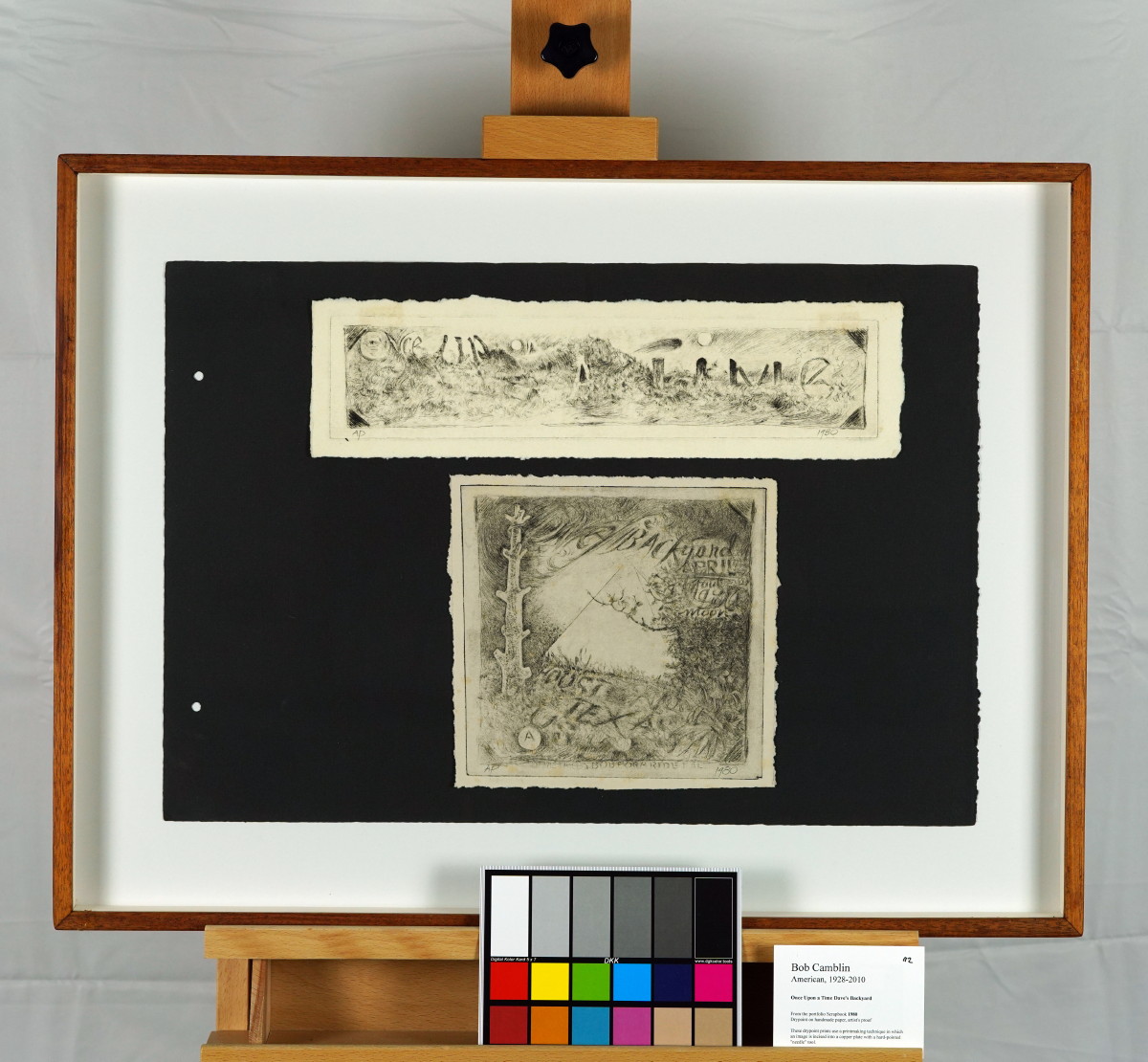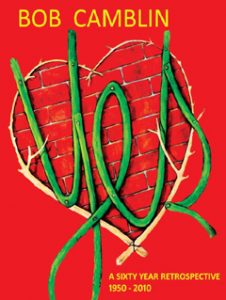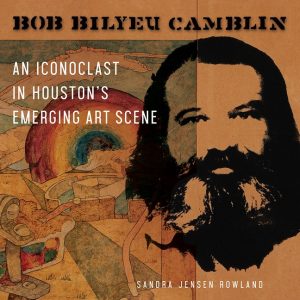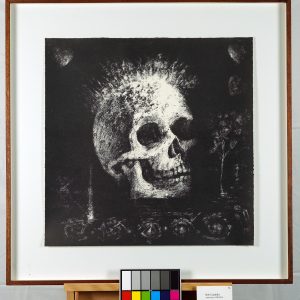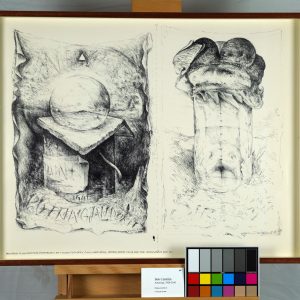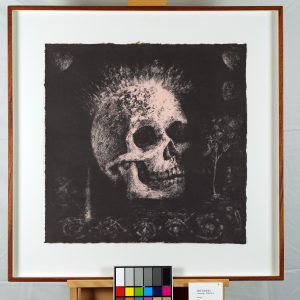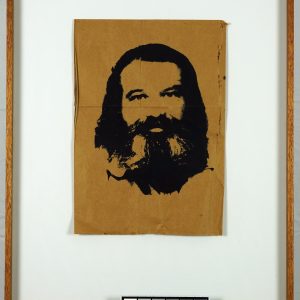Description
Once Upon A Time, Dave’s Backyard, 1980Lithograph AP Little Egypt Enterprises
Unsigned (what’s the reason for this?)
15 x 22 in. (image)
20.75 x 27.5 x 2 in. (frame)
original, includes certificate of authenticity from ArtTrust
The lithographs “Once Upon a Time” and “Dave’s Backyard” are of two distinct prints, both rendered in an etched style with high contrast between light and dark. The top segment shows the text “Once Upon A Time” surrounded by a swirling, ethereal environment that hints at a mysterious or fantasy landscape. Below, the lower portion features more complex textures and details, including fragmented text and a scene that suggests natural elements, such as tree branches and flowing lines, reminiscent of a surreal dreamscape. The composition carries a sense of storytelling or narrative beginning, emphasized by the phrase “Once Upon A Time.”
In Zen, the concept of time and stories is often considered an illusion or construct of the mind. The phrase “Once Upon A Time” traditionally marks the beginning of a narrative, pulling the observer away from the present moment into a realm of imagination. However, Zen invites us to recognize that all stories, no matter how enchanting, are fabrications of the mind, thus holding the viewer in duality. This artwork could symbolize the human tendency to get caught in narratives and mental constructs, encouraging mindfulness of the present reality that exists beyond the stories we tell ourselves.
The I Ching could be associated with Hexagram 18, “Work on What Has Been Spoiled (Decay).” This hexagram represents the idea of rectifying something that has been neglected or deteriorated, akin to rewriting a story or revisiting an old narrative to heal or understand it. The fragmented and worn appearance of the artwork suggests a history of experiences and thoughts that need acknowledgment and restoration. By confronting these stories or past experiences, one can find clarity and grow beyond them, much like the process described in hexagram 18.
Bringing the above elements together, this artwork seems to be an exploration of stories, memories, and the passage of time. It juxtaposes the allure of stories “Once Upon A Time” with the Zen notion of being present and the I Ching’s emphasis on addressing what is past. The etching’s texture and erosion-like quality can symbolize the impermanence of all narratives and the need to either let go or transform them into a form that serves our present growth. The scene suggests both a beginning and an end, highlighting the cyclical nature of storytelling and life itself.
From an art history perspective, the piece’s style shares affinities with surrealist etching, where artists like Max Ernst or Salvador Dalí utilized similar dreamlike textures to challenge perceptions of reality. The composition recalls the Romantic tradition of exploring the sublime and the mystical, mixed with a more modern abstraction that invites viewers to find meaning through contemplation. The textural quality of the etching may also nod towards older printmaking techniques, echoing the artisanal tradition of narrative illustration.
*Shipping cost will vary, please inquire at sales@camblingallery.com before purchasing.
Currently ships from Oregon, USA
Member of artnet? Apply for a discount! Inquire about intergallery and permanent loans for museums.
From the series Scrapbook, an edition of six pages and cover of individual prints by dry point etching from Little Egypt Enterprises.
“Scrapbook” was featured in his Yes Retrospective and in Sandra Jensen Rowland’s monograph, Bob Bilyeu Camblin – An Iconoclast in Houston’s Emerging Art Scene.
Reproductions of this drawing are available in multiple sizes!
Click here to use our high-resolution viewer!
This artwork is available with a non-fungible token to ensure traceability and transparency of provenance.
The royalty factor – Unlike traditional artworks, such as paintings, mosaics, statues, and the like, NFTs can be programmed to provide royalties to you every time the painting (and token) is sold and resold – for eternity. That mind-bending Camblin you sold could be worth millions one day and provide income for your great-great-great grandkids!
Anti-forgery – The central idea underpinning NFTs is that they are built on the blockchain, which is meant to offer advanced security. Think of it like an un-erasable and un-avoidable copyright.
Easy authentication – Another compelling aspect of NFT art and NFTs in general is the ability to quickly and easily authenticate items, as the record of ownership is scrupulously kept on the blockchain.
